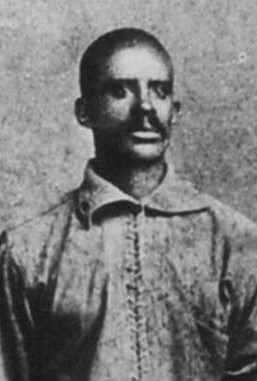
From the outset of baseball, those in charge instituted a firm but unspoken color line. Although minority leagues developed over time, as seen in some of the resources below, the leagues faced harsh challenges not shared by their white counterparts. Many teams faced increased charges at hotels and restaurants, limited access to resources while traveling based on segregation, and the eternal threat of racial violence.





Heaphy, Leslie A. (2013). The Negro leagues, 1869-1960. McFarland & Company.
A solid introduction to the life and legacy of the Negro Leagues. This book offers a general overview of the leagues, from their conception to their demise at the hands of the Great Depression. Addressing much of the development and technicalities of the game, the work makes a point to cover both the players and managers who played a role in the life of the Leagues.
Peterson, Robert W. (1999) Only The Ball Was White. Gramercy.
A compelling documentation of the Negro Leagues and the players that dazzled within them. Peterson crafts the stories of some of baseball's least-known greats. Playing before the breaking of the color line, Peterson creates an image of baseball in the Negro Leagues through statistics, interviews with the players, and other contemporary artifacts.
Cottrell, Robert C. (2012) Two Pioneers: How Hank Greenberg and Jackie Robinson Transformed Baseball — and America. Potomac Books.
A work addressing two figures who played a major role in equalizing participation and representation in baseball. Greenberg, a Jewish player in the 1930s, and Robinson, an African American player in the 1940s, were both highly skilled players who happened to exist outside the previously enforced norm of baseball. Though the two men played on different teams at different times and came from different circumstances, both of their stories highlight the issues minority players faced in the game of baseball, and how players strove to overcome them.
Burgos, Adrian. (2007). Playing America's Game: Baseball, Latinos, and the Color Line. University of California Press.
Latino players occupied an interesting point in relation to American baseball and the color line. Though white, American players often played exhibition games in Central America, the same openness did not extend to the States. Many of the higher ups in baseball were vocal about Latino players still violating the unofficial segregation of baseball. Some Latinos were able to play, but only light-skinned players were permitted. Latino participation increased during WWII and after, and continued to improve following the break of the color line in the 1940s.
Cool Papa Bell. (n.d.). National Baseball Hall of Fame. Retrieved April 23, 2020. https://baseballhall.org/hall-of-famers/bell-cool-papa
Martín Dihigo. (n.d.). National Baseball Hall of Fame. Retrieved April 23, 2020.https://baseballhall.org/hof/dihigo-mart%C3%ADn
Bud Fowler. (2020, February 21). In Wikipedia. https://en.wikipedia.org/wiki/Bud_Fowler
Satchel Paige. (n.d.). National Baseball Hall of Fame. Retrieved April 23, 2020.https://baseballhall.org/hall-of-famers/paige-satchel
Moses Fleetwood Walker. (2020, March 16). In Wikipedia. https://en.wikipedia.org/wiki/Moses_Fleetwood_Walker
Kelly, Matt. (2020, February 12). The 35 Negro League legends in the Hall of Fame. MLB News. https://www.mlb.com/news/negro-leaguers-in-the-national-baseball-hall-of-fame